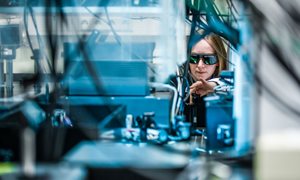
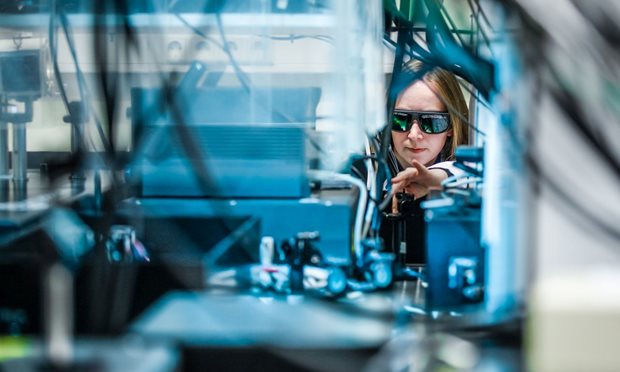
Preclinical Imaging Center
PRIME is a centralized facility for multimodality imaging of small animals, such as mice and rats. Multi modality imaging is a strategic technology, that can be used to support biopharmaceutical development and preclinical research. our aims and servicesPreclinical Imaging Center
Aims
- A durable facility for small animals imaging with state of the art equipment and expertise.
- A facility with multi-modal equipment and offices integrated in one centre at one location.
- A centre that operates essentially as a SPF/DMII unit to allow experiments with transgenic animals and with adeno, retro and lenti-viruses.
- A centre with links to clinical/human imaging facilities.
Services
The infrastructure and imaging equipment in PRIME has some unique features under one roof in one facility:- State-of-the-art scanners for: MRI, SPECT, PET, optical imaging, multiphoton microscopy, intrinsic optical imaging and ultrasound.
- Cognition and behavior rooms to measure (social) behavior learning and memory sensory-motor integration activity and motor skills.
- Barrier-free animal handling at safety level II allowing small animal studies with animals that can be infected with various agents (incl. adeno-/retroviruses, bacteria, parasites).
Contract
PRIME also supports the pharmaceutical and biotechnology industries in the form of research services outsourced on a contract basis. The experts of PRIME can be involved in project development and consultancy as well as giving explanations on the use of our equipment. For more information you can contact Wilma Janssen.PRIME and ...
-
PRIME is a facility that provides support to the pharmaceutical and biotechnology industries in the form of research services outsourced on a contract basis.
read more
Contract Research Organization (CRO)
The Preclinical Imaging Centre (PRIME) is a centralized facility for multimodality imaging of small animals, such as mice and rats. Multi modality imaging is a strategic technology, that can be used to support biopharmaceutical development and preclinical research.
PRIME is staffed by experts from various disciplines such as Radiology, Nuclear Medicine, Cell Biology, Medical Ultrasound Imaging Center, Anatomy and Cognitive Neuroscience. The infrastructure and imaging equipment in PRIME has some unique features under one roof in one facility:- state-of-the-art scanners for: MRI, SPECT, PET, optical imaging, multiphoton microscopy , intrinsic optical imaging and ultrasound.
- cognition and behavior rooms to measure (social) behavior learning and memory sensory-motor integration activity and motor skills.
- barrier-free animal handling at safety level II allowing small animal studies with animals that can be infected with various agents (incl. adeno-/retroviruses, bacteria, parasites).
Investigators from a wide range of research themes use the imaging facilities of PRIME e.g. Alzheimer, cancer development and immune defense, movement disorders, infectious diseases and host response, inflammatory diseases, urological cancers and women's cancers.
PRIME provides research services for third parties outsourced on a contract basis (i.e contract research organization). The experts in PRIME can be involved in project development, consultancy and rental of equipment. For more information you can contact the coordinator of PRIME, Wilma Janssen. -
PRIME is a member of the pan-European Euro BioImaging project which will deploy a distributed biological and biomedical imaging infrastructure in Europa in a coordinated and harmonized manner.
go to Euro BioImaging -
PRIME joined the collaborative DTL platform of life science and technology research groups in the Dutch clinical & health, nutrition, crop and livestock breeding and industrial microbiology sectors.
read more
Dutch Techcentre for Life Science (DTL)
PRIME joined the collaborative DTL platform of life science and technology research groups in the Dutch clinical & health, nutrition, crop and livestock breeding and industrial microbiology sectors.- go to DTL platform
- view DTL newsletter (January 2018)
- view DTL PRIME PowerPoint
-
PRIME is a member of COMULIS (Correlated Multimodal Imaging in Life Sciences), which is a EU-funded COST Action.
read more
COMULIS
COMULIS (Correlated Multimodal Imaging in Life Sciences) is a EU-funded COST Action that aims at fueling urgently needed collaborations in the field of correlated multimodal imaging (CMI), promoting and disseminating its benefits through showcase pipelines, and paving the way for its technological advancement and implementation as a versatile tool in biological and preclinical research.
For more information, please visit the COMULIS website.
Invitation PRIME lecture
Lecture by Sylvia Wenker and Daniele Taurillo, Monday June 5th at 12:30.
read moreNew equipment in PRIME
At PRIME, a high-power portable fiber coupled diode laser is available. read moreNew equipment in PRIME
In targeted photodynamic therapy, molecules named photosensitizers are brought to tissues or cells of interest. These photosensitizers can be activated with light of a specific wavelength, upon which they generate the toxic reactive oxygen species and induce cell death.
At PRIME, a high-power portable fiber coupled diode laser is available (BWF2 B&WTek inc). It emits 690 nm light with an adjustable output power up to 500 mW. Furthermore a collimating lens is available, which makes the system suitable for homogenous illumination of a 5 mm diameter surface. Using this system, NIR-photosensitizers such as the frequently used IRDye700DX can effectively be activated.
MRI scanner for mice
Less need for animal testing thanks to MRI scanner for mice. read more on NOSImaging technologies
Powerful techniques in biomedical research
All pre-clinical non-invasive imaging technologies available in PRIME are powerful techniques in biomedical research. Combining the strengths of anatomical and functional imaging modalities allows the detection and quantitative determination of morphological, physiological and metabolic processes.
Facility MR imaging
An MR system uses a strong magnetic field to align the magnetization of some atoms in the body, and radio frequency fields to systematically alter this alignment for detection purposes. read more
Facility Radionuclide imaging
Radionuclide imaging relies on the tracer principle in which a minute amount of a radioactive tracer is injected into the body to monitor a physiological/biochemical process. read more
Facility Optical imaging
Optical imaging offers unique possibilities for in vitro and in vivo imaging applications, especially in the context of molecular imaging. read more
Facility Ultrasound and photoacoustic imaging
High Frequency Ultrasound and Photoacoustic Imaging is a technique used to visualize detailed internal structures and function with unprecedented temporal and spatial resolution. read more
Facility Multi-photon microscopy
Multi-photon excitation microscopy (MPM) is the approach of choice for fluorescence imaging of living three-dimensional tissue at subcellular resolution for up to one millimeter in depth. read more
Facility Behavior and cognition
In the Behavior & Cognition Facilities, (social) behavior, cognition, sensory-motor integration and blood pressure in neural development, adolescence, ageing and neurodegenerative diseases can be measured in several mice models. read more
Facility Intrinsic optical and multi-photon imaging
The combination of intrinsic optical imaging and multiphoton microscopy has many applications in neuroscience, because it allows to measure neural activity and structural changes in the nervous system at multiple scales. read more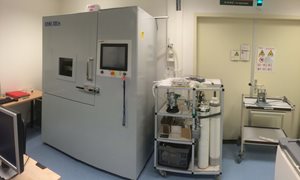
Facility Radiotherapy
With our XRad we can irradiate tumors in animals with varying doses. Our Physicists and technicians will determine the settings of the equipment and after that treatment with a dose varying from almost zero to >50Gy is possible. read more-
Detecting and treating tumor cells during prostate cancer surgeryDefense of Yvonne Derks' thesis on 8 September8 September 2022
-
Liver tumors irradiated from inside can be followed live from outside17 February 2022
-
LUMO Labs and Oost NL invest in AiosynInvestment accelerates development of artificial intelligence platform to improve diagnostics7 February 2022
Getting there
Visiting address
PRIME
Geert Grooteplein 29
6525 EZ Nijmegen
Directions


-
Alex Hanssen senior biotechnicus
-
Wilma Janssen-Kessels procescoördinator PRIME
-
Floor Moonen biotechnicus
-
Liz van den Brand teamcoördinator CDL
Departments
PRIME is a partnership between the departments that provide dedicated state-of-the-art equipment and expertise.- Radiology
- Nuclear Medicine
- Cell Biology
- Anatomy
- Cognitive Neuroscience
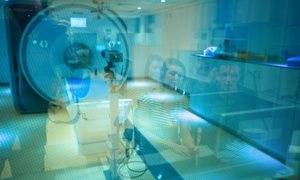
Radboudumc Technology Center Imaging
This technology center provides cutting-edge technology and service for imaging-related preclinical and clinical research questions. This covers the spectrum from molecule to man to population.
read more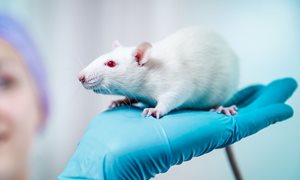
Radboudumc Technology Center Animal research facility
This technology center offers advice and support from planning up to and including the conduct of animal research on behalf of biomedical research and education.
read more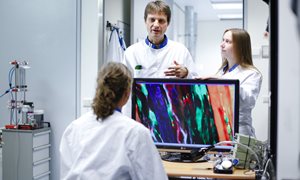
Radboudumc Technology Center Microscopy
This technology center offers access to both standard and innovative advanced microscopy infrastructure and applications including technical operator-assistance and in-depth microscopic imaging knowledge.
read more



